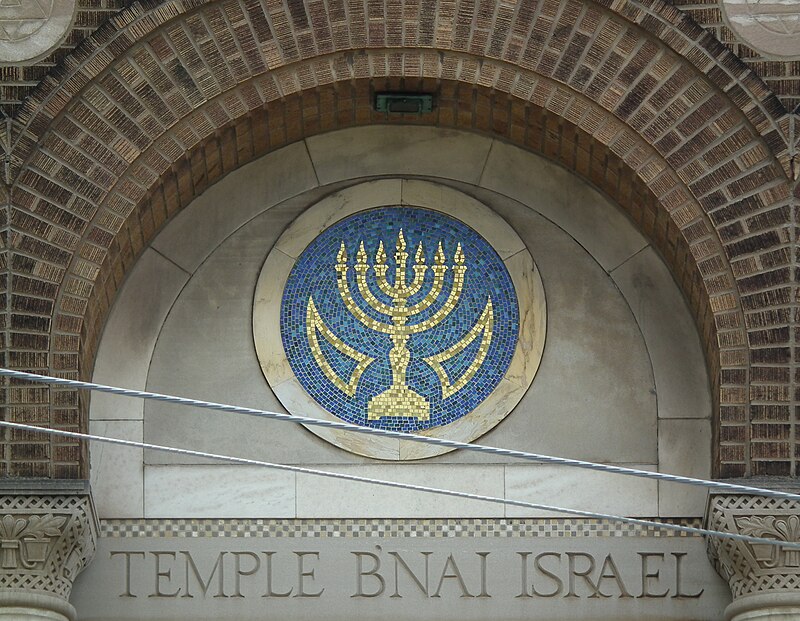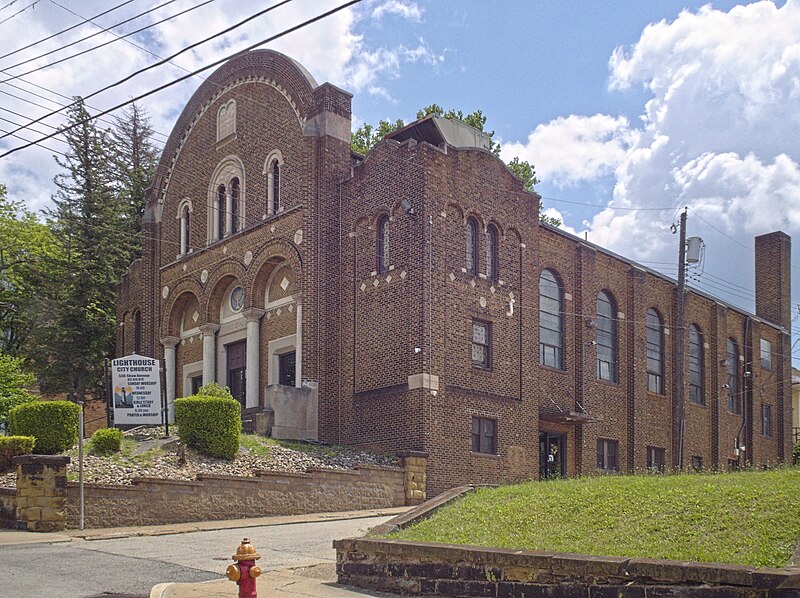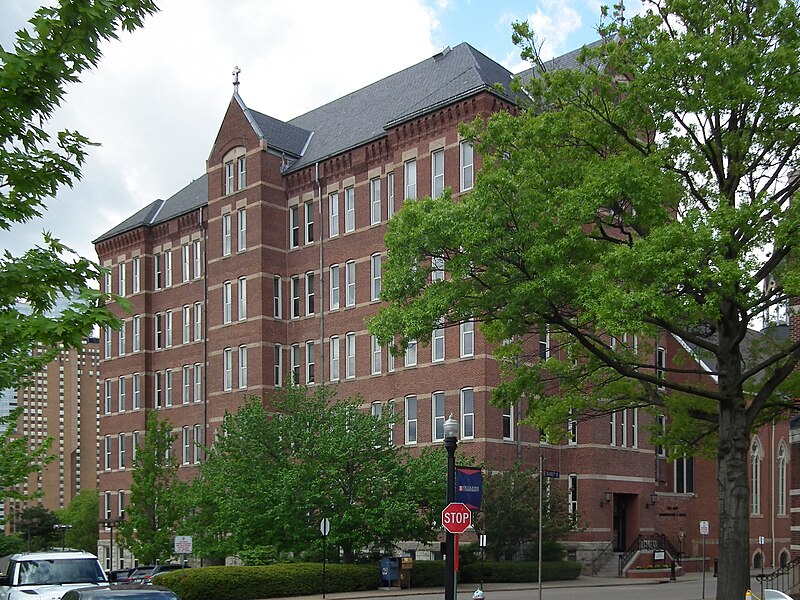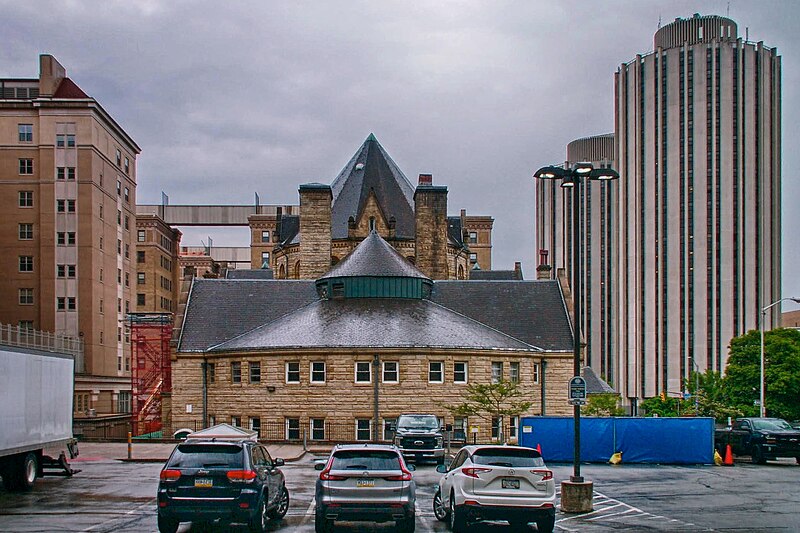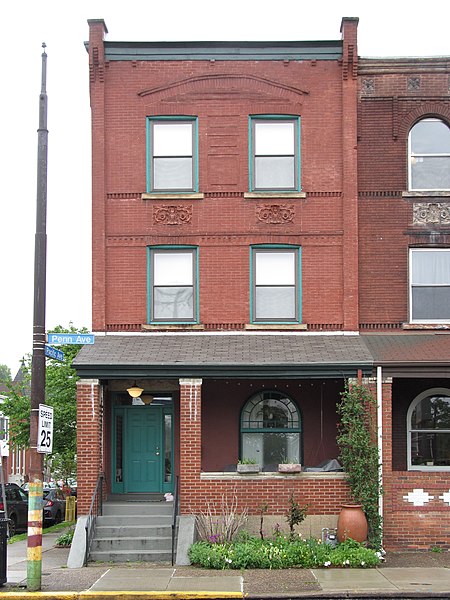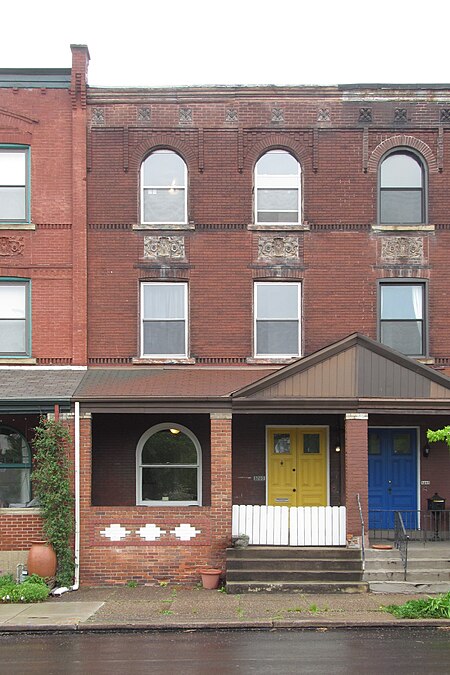
This glorious Romanesque church was closed in 2009, but it was taken over by a community education organization called Dragon’s Den, which has kept it up beautifully, and in the well-preserved interior has added “a state-of-the-art two-level challenge course, climbing wall, and a 160-foot zip line that connects the choir loft to the former altar.” Now you know what to do with a big vacant church.
Addendum: The architect was Frederick Sauer, who gave us a number of fine churches and the whimsical Sauer Buildings in Aspinwall.


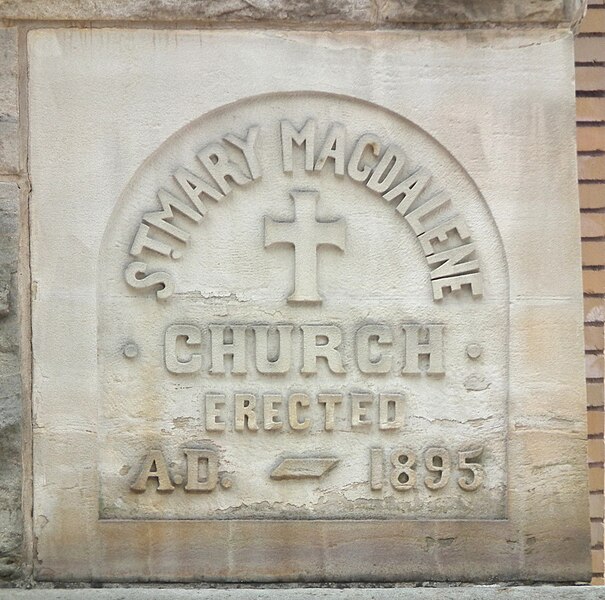

The rectory is overshadowed by the magnificent church, but it is certainly a striking design in its own right.


